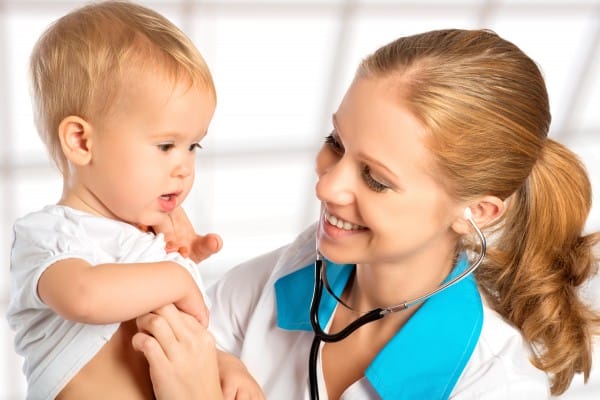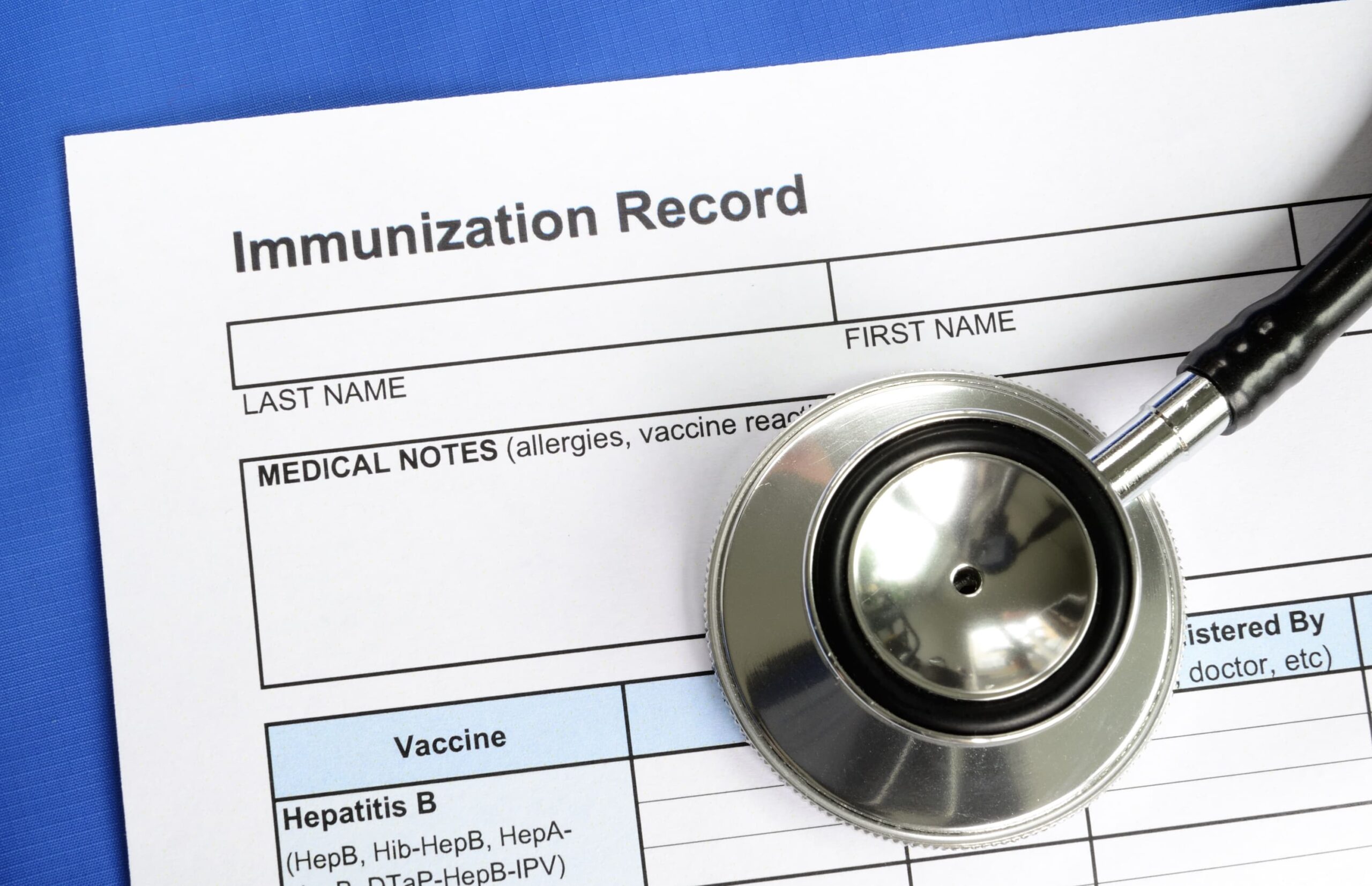Sinusitis, also known as rhinosinusitis, is the inflammation of the sinuses, the air-filled cavities in the forehead, cheeks, and nose. When this happens, it is difficult for mucus to drain from the nose, breathing through the nose may be impaired, and increased pressure may cause face pain and/or headache.
Sinusitis can be triggered by various factors, including allergies, infections (1), and even gastroesophageal reflux disease (GERD) (2). In this article, we will learn about the causes, symptoms, and home care strategies for sinusitis, with a focus on acute cases caused by viruses and bacteria.
For more information about allergic sinusitis caused by hayfever, see: A Natural Approach To Seasonal Allergies – Dr. Green Mom.
For more information about GERD, see: Natural Treatments For Gastroesophageal Reflux Disease (GERD) In Kids or Natural Treatment Of GERD During Pregnancy – Dr. Green Mom.
Symptoms of Acute Sinusitis
Because viral illness is the most frequent cause of acute sinusitis, in most cases, sinusitis is preceded by the usual symptoms of a mild upper respiratory infection (3). Look for the following symptoms as clues that a cold has progressed to a sinus infection and acute sinusitis.
Common Symptoms For Adults And Older Kids
- Pain that feels like pressure behind the eyes, nose, and forehead
- Nasal discharge and/or congestion
- Fatigue
- Malaise
- Swollen lymph nodes
- Fever
- Post nasal drip
- Bad breath
- A cough that is worse at night
- A sore throat
- An unpleasant taste in the mouth
Common Symptoms For Children Under Age 5
- Nasal symptoms (stuffiness, discharge, etc) that last longer than 7-10 days
- A nighttime cough (plus occasional daytime cough)
- Swelling around the eyes
- Malaise and sore throat
- Note: young children don’t usually get a sinusitis headache
When sinusitis lasts for more than 4 weeks it is considered subacute sinusitis. When sinusitis persists for more than 12 weeks it is considered chronic sinusitis.
Note: Migraines are commonly misdiagnosed as sinusitis, leading to delay in proper diagnosis and overmedication.
Treatment For Sinusitis
Treatment for sinusitis involves helping mucus drain from the upper respiratory tract while also supporting the immune system and healthy mucus membranes. Our immune system is responsible for defending the body against harmful invaders, such as bacteria, viruses, fungi, and other pathogens, by identifying and neutralizing them to maintain health. During times of acute illness, it is the immune system’s job to mount a rapid and targeted response to eliminate the invading threats and restore the body to a state of balance and health.
Strategies To Drain Mucus From The Upper Respiratory Tract
1. Steam Inhalation
For babies and toddlers, use a shower steam inhalation. This can be done by running a hot shower to let the bathroom fill with steam and then simply spending some time in the steamy bathroom with your child.
 Older children and adults can benefit from botanical facial steams. See directions here: Botanical Steam Inhalation To Reduce Congestion & Soothe Coughs – Dr. Green Mom.
Older children and adults can benefit from botanical facial steams. See directions here: Botanical Steam Inhalation To Reduce Congestion & Soothe Coughs – Dr. Green Mom.
2. Nasal Rinse Or Nasal Drops & Suction
Nasal rinses help moisten airways, reduce inflammation, clear mucus and potentially dislodge pathogens. Nasal rinses can be used on most people over 6 months of age.
Infants under 6 months need help clearing their sinuses. I usually recommend applying 1-2 saline nasal drops to a nostril to thin the mucus before using a baby nasal suction device to clear mucus.
For details about how to make and use saline sinus or nasal rinses, see: How To Use A Saline Sinus Rinse For Stuffy Noses – Dr. Green Mom.
Strategies To Support The Immune System
1. Minimize sugar and processed foods.
2. Choose nutritionally dense whole foods that are easy to digest.
3. Stay well-hydrated with options like homemade electrolyte drinks and healthy popsicles.
4. Consider adding immune supporting herbs to your routine, such as elderberry (4) and ginger (5).
5. Consider immune supporting nutrients like vitamin D (6), zinc (7), and vitamin C (8).
Is Acute Sinusitis Viral Or Bacterial?
Acute sinusitis may be either viral or bacterial. Viral sinusitis may evolve into bacterial sinusitis. Signs of bacterial sinusitis include sinus pain, swelling or redness of the skin over a sinus, fever lasting over 3 days, fever returning after 24+ hours, and sinusitis lasting beyond 14 days.
Clear, yellow, and green discharge is seen with both viral and bacterial infections. However, if discharge becomes thicker and resembles pus rather than mucus, this suggests a bacterial infection.
Should Acute Sinusitis Be Treated With Antibiotics Or Corticosteroids?
Research shows that 80% of acute sinusitis cases will resolve on their own with supportive home treatment (6), and less than 2% of cases are estimated to be bacterial (9). Therefore many doctors will prescribe a watch and wait approach that involves monitoring the symptoms and waiting until they reach a certain point before prescribing antibiotics.
Corticosteroids, or other nasal anti-inflammatories, may be needed to open the nasal passages and allow them to drain. However, even conventional physicians now recognize the efficacy of saline sinus rinses at opening airways and managing inflammation and many will prescribe this approach as a first line treatment before reaching for stronger medication (10).
To learn more about saline rinses, see: How To Use A Saline Sinus Rinse For Stuffy Noses – Dr. Green Mom.
When to See a Doctor For Sinusitis
Sinusitis usually gets better within 7-10 days. If symptoms last longer than 10 days, nasal symptoms continue for over 14 days, or a fever develops after the seventh day of symptoms, reach out to your doctor.
Though sinusitis is usually not concerning and often goes away on its own, there are times when it can progress to a serious infection that requires emergency attention. If your child appears to be in need of immediate medical attention, do not hesitate to seek it out.
Severe Symptoms That Require Emergency Care
- Fever over 104°F
- Severe difficulty breathing
- Severe weakness or inability to move
- Confusion or other mental changes
- Vision alterations
- Stiff neck
- Seizures
- Severe pain that doesn’t respond to treatment
Summary
Sinusitis is a condition characterized by inflammation of the sinuses. Sinusitis usually resolves on its own, and recovery can be supported through steam inhalation and sinus rinses coupled with immune support. Though sinusitis is usually not concerning and often goes away on its own, there are times when it can progress to a serious infection that requires emergency attention. Emergency symptoms include a fever over 104°F, severe difficulty breathing, weakness or inability to move, confusion, vision changes, a stiff neck, seizures, or severe pain.
References:
- Battisti AS, Modi P, Pangia J. Sinusitis. [Updated 2023 Mar 2]. In: StatPearls [Internet]. Treasure Island (FL): StatPearls Publishing; 2023 Jan-. Available from: https://www.ncbi.nlm.nih.gov/books/NBK470383/
- Wong, I. W., Rees, G., Greiff, L., Myers, J. C., Jamieson, G. G., & Wormald, P. J. (2010). Gastroesophageal reflux disease and chronic sinusitis: in search of an esophageal-nasal reflex. American journal of rhinology & allergy, 24(4), 255–259. https://doi.org/10.2500/ajra.2010.24.3490
- Brook, I. (2011). Microbiology of Sinusitis. Proceedings of the American Thoracic Society, 8(1), 90–100. https://doi.org/10.1513/pats.201006-038rn
- Wieland, L. S., Piechotta, V., Feinberg, T., Ludeman, E., Hutton, B., Kanji, S., Seely, D., & Garritty, C. (2021). Elderberry for prevention and treatment of viral respiratory illnesses: a systematic review. BMC complementary medicine and therapies, 21(1), 112. https://doi.org/10.1186/s12906-021-03283-5
- Mao, Q. Q., Xu, X. Y., Cao, S. Y., Gan, R. Y., Corke, H., Beta, T., & Li, H. B. (2019). Bioactive Compounds and Bioactivities of Ginger (Zingiber officinale Roscoe). Foods (Basel, Switzerland), 8(6), 185. https://doi.org/10.3390/foods8060185
- Aranow C. (2011). Vitamin D and the immune system. Journal of investigative medicine : the official publication of the American Federation for Clinical Research, 59(6), 881–886. https://doi.org/10.2310/JIM.0b013e31821b8755
- Wessels, I., Maywald, M., & Rink, L. (2017). Zinc as a Gatekeeper of Immune Function. Nutrients, 9(12), 1286. https://doi.org/10.3390/nu9121286
- Carr, A. C., & Maggini, S. (2017). Vitamin C and Immune Function. Nutrients, 9(11), 1211. https://doi.org/10.3390/nu9111211
- Boisselle C, Rowland K. PURLs: Rethinking antibiotics for sinusitis: again. J Fam Pract. 2012 Oct;61(10):610-2. PMID: 23106063; PMCID: PMC3601684.
- Rabago D, Zgierska A. Saline nasal irrigation for upper respiratory conditions. Am Fam Physician. 2009 Nov 15;80(10):1117-9. PMID: 19904896; PMCID: PMC2778074.









2 Comments